Heritage & Tourism Series-III
Srinagar’s Heritage of Fallen Stars and Rising Suns!
By Rashmi Talwar
No patch of civilization stands as a ghost; behind it are always marvellous tales of strengths and weaknesses, sufferings and challenges, growth and falls, courage and betrayals. Every civilisation has a heritage bubbling with stories of fallen stars and risings suns.
As an ancient city, Srinagar ensconces the source of one of the richest tangible heritages emerging from the footprints of a cross section of the greatest influences of time including Hinduism, Buddhism and Islam. Hindu kingdoms, followed by Muslim rule, culminating with the Mughals and later Sikhs and Dogras, have left many stories in their wake. Stories of grit and grind, translating into fabulous visible heritage, are so varied and spectacular that they have to struggle hard to find a match.
There is urgent need to protect and preserve this tangible heritage. Tourism is the singular and the most potent factor that has the unique power to provide incentive for sustaining this rich but crumbling and decaying heritage.
As an audience is to a singer and spectators are to a game of cricket, heritage tourism is to heritage conservation. Attraction amongst tourists can be enhanced when heritage is put to attractive use, like the ‘Food Street in Lahore’ that has used beautiful heritage building facades, lighted up on both sides of a wide street, to showcase the savoury heritage of culinary delights, in an ambience that transforms them to ancient times. Not only do the residents in Lahore prefer to take guests and enchant tourists with a special dinner to this street, instead of fancy restaurants, they actually take great pride in it.
Delight in heritage can only be realized when its optimum strengths are recognized and used to advantage. Tourism can give a vital push to preservation when it becomes an income generating enterprise. If we consider only one city i.e. Srinagar – it is a veritable storehouse of rich heritage, including floating heritage, open air heritage, heritage in the entwining lanes of its downtown or heritage perched on picturesque hills and more.
Significantly, heritage buildings in developed countries solely bank on tourism for their upkeep with little or no help from government funds. Many private enterprises have taken over such heritage properties for the purpose of creating their private tourism circuit and generate income, thus conserving heritage buildings, artefacts and unique habitations.
Such examples like the Glow Worm Caves of New Zealand, the stalagmite-stalactite formations at famous Luray Caverns in Virginia near Washington DC, USA, are entirely managed by private concerns. Even some heritage churches like London’s St Paul’s Cathedral charges 16 pounds each from sightseers. These heritage properties are thus able to sustain maintenance and repair entirely by tourism along with generating jobs for unlimited tertiary or related units.
History of Srinagar
Srinagar has a rare combination of medieval charm and modernity. Its topography can indeed make anyone fall in love with it at first glance. One theory of the origin of the name Srinagar is that a Pandava King Ashoka (not to be confused with the Mauryan Emperor Ashoka) built the city of Srinagari (Srinagar). Another theory is that Mauryan Emperor Ashoka founded the original city of Srinagar, then situated on the site of the present village of Pandrethan, 5 km to the north of the existing capital. Some say that Srinagar has a history dating back at least to the 3rd century BC and before being known by the name Srinagar, its name was Pravarsenpur as it was founded by the King Pravarasena II.
Pre-historic Sites in Kashmir
Few people know that Srinagar’s habitation dates back to 3000 BC, referred to as the ‘new stone age’, traces of which were first discovered in ‘Burzahom’- the first Neolithic site in Kashmir. Burzahom, located in Srinagar between the banks of the Dal Lake and Zabarvan hills, is just about 5-kms from Shalimar- the world famous Mughal gardens, It is not the only one, more prehistoric sites have been discovered in nooks and corners of Kashmir.
‘Burzahom’- the name translates as ‘place’ (hom) of ‘birch’ (burza) in Kashmiri. Interestingly, it was found with burnt birch remnants during excavations that proved that an abundance of birch trees flourished in the New Stone Age in this area. The unique feature of Burzahom is the discovery of tools manufactured using animal bones and antlers besides which the strangest ritual prevalent at those times of ‘animal burials’ was found that has not been seen at any Neolithic site in any other parts of India.
Plenty of food from forests, abundant water supply and a raised location protected Burzahom plateau from seasonal flooding, thus remaining continuously settled from the New Stone Age onwards to the Early Historical period.
Lifestyle and Crafts
Remnants of the bygone era, through the ancient city’s maze of crisscrossing lanes, could give a glimpse into the dwellers unique lifestyle that carries on undeterred by changing times, not entirely due to stubbornness of people, disallowing change, but the turmoil and survival tactics that naturally came into play dealing with varied circumstances for inhabitants and their families. For many thus, time has stood still, as animal instinct took precedence and time or avenues for outward vision of the changing world were a faraway dream, if they were a dream at all! Many rituals continued for fear of divine wrath or reprisals. Superstitions and ritualistic beliefs gripped the populace and grew deeper roots due to the tumult and disturbances. Yet, many lifestyles continued on the same pattern, unaffected by the vagaries of time.
Even though supplies have become plentiful all year around in recent times, people continue to store, as a way of life. Watch for many an open window, especially facing east, that would hold vegetable garlands in summer. No, this is not a decoration or ritual–it’s a way to dry vegetables for storage and use during the winter chill. Similarly, pickling and drying fruits like apricots, storing nuts and grain were meant to tide over the scarcity of food. Dr. Aneesa, a senior tourism official who accompanied me on a city tour recently, laughs and says –“Wish that, vice-versa, we could also store icicles that hang from the roofs after snow, to use for sherbets in summers, as temperatures in summers have risen steadily in Srinagar as compared to the olden times”.
In the by lanes of Srinagar, however, the beehive of close houses may not entirely dispel the winter chill or fear from hearts but they have surely insulated people from extreme weather conditions, time and again. The ‘dub’ or the frontal balcony, jutting out in Rajasthani ‘Jharokha’ style, of an old Kashmiri house, that is still inhabited, could have tiny little, shy, hazel eyes or shrouded faces of giggling women and children, peeping out on the street.
Art and Kashmiris
Arts and crafts have been an integral part of life in Kashmir since time immemorial. The ruins of Martand and Avantipora bear ample testimony to a great tradition of sculpture that flourished in these parts many centuries ago. Not many people are aware that it was the Kashmiri artists who painted all monasteries in the region of Tibet, Ladakh and Lahul Spiti in Himachal Pradesh. Later the arts and crafts also entered Kashmir when Shah-i-Hamdan came to Kashmir from Persia (now Iran) during the 13th century. Among the seven hundred followers, who accompanied him to Kashmir, were men of arts and crafts who flourished here. They popularized shawl-making, carpet and cloth-weaving, pottery and calligraphy.
In the downtown area in Srinagar where many craftsmen live, if you find a Kashmiri hunched over something, it could either be a hookah or Kangri or better still he could be engaged in tracing a treasure trove of hand paintings of birds, fruits, flowers and tree branches on a Papier-mâché jingle bell, or sewing an intricate pattern of interlocking Chinar leaves with Tulips and Paisley using Sozni embroidery on world famous Pashmina shawls or even Pashmina Sarees that were once prized heirloom as dowry gifts amongst affluent Kashmiris, especially the Kashmiri Pandits. His sharp light eyes could be watching as his hands carve fabulous patterns of daffodils, Chinar leaves and Shikaras or Deers onto soft furniture wood. What do you know! It may be the Kani shawl or the finest silk carpet with Persian designs or his deft fingers could be leading a willow twig’s fascinating journey in a zigzag tumble to create a duck shaped bread-server or a ‘Sarposh’ of woven willow- the royal covering for bridal Shagun or offerings of dainties, or he could be intently filing a willow, to get that perfect angle for a Sachin Tendulkar look-alike bat.
If you are inquisitive about more such handicraft-making clusters then the J&K Government’s Arts Emporium exhibits 11 traditional handicraft demonstrations by Kashmiri artisans including the rare sapphire-ware, crewel embroidery on ‘Namdas’ or mats and tapestry etc. But if one is willing to dart to real time artisans then Kashmir’s fabled silver, copper and other metal-ware craftsmen creating such beauties and workable objects d’art as ‘Samawar’, or the traditional ‘Tashnaer’ are clustered in Zaina Kadal. Papier-mâché items are made in bulk mostly in Magam village near Gulmarg populated by Shia Muslims, the best mortar and pestle comes from Pandrethan near Srinagar close to stone quarries, while units making carpets or Kaleen are clustered near Hazratbal Shrine. The best willow work, as also ornate Kangris or wicker fire pots, can be found in Tsrar Sharif. Most handicrafts making work is carried out in downtown areas in close knit residential colonies. Similarly, Kokker Bazaar is for Kashmiri spices, Hari Singh High Street is hub of gold jewellery. Ghonikhan is a market for home décor and garments.
Best Ways to Explore Heritage
• Walking is one of the best ways to catch a glimpse of awe-inspiring architectural marvels of Kashmir’s capital city -Srinagar’s interior or downtown area, which has many a gem veiled away in its crevices.
• Taking a shikara boat on River Jhelum is another novel way to see the heritage buildings. You may also observe some that seem to hold secret passages for a clandestine back-door entry!• Given the nature of the labyrinthine lanes of the ancient city, it would not be amiss for the tourism department to introduce ‘Segways’—a two-wheeled electric upright transporter, for a single person that looks like an overgrown child’s scooter used extensively for tourism in developed countries. “Segway, could be a good option for Kashmir, especially as it is non-obtrusive, non- pollutant, taking minimal space and can afford even the Greying-but-Adventurous (GBA) population of the world an opportunity to visit without tiring themselves by walking”, says a global tourism expert.
• Hiring a taxi, though expensive, is of course the most convenient as the driver remains always stationed behind the steering wheel and one needn’t park in touristy venues in narrow winding lanes. The driver can always move the vehicle in case of need. Otherwise, due to space constraints, parking could blow your ears out with Kashmiri shouts, spanking, blowing horns and screams and ‘if looks could kill’ stares –an eye-popping menacing gaze could hold you frozen.
• An audio-device guide used extensively abroad would be a wonderful way to guide the tourists during their visit to the old Srinagar city. It provides a recorded spoken commentary, normally through a handheld device, for an attraction such as a museum or a walk through an old township. These devices could facilitate self-guided tours of outdoor locations or as a part of an organised tour. The headphone audio device guide provides background, as well as information on the things being viewed. Audio guides are in multilingual versions and can be rented on the spot for a small fee and keeping the identity proof of tourist, as security. The vast and sprawling Louvre Museum in Paris has utilised this facility to great advantage and it can also work wonders in Srinagar.
• Another way is a ‘single’ pre-paid ticket that can be used for Shikaras, Taxis and Auto Rickshaws in Srinagar thus facilitating tourists in visiting the places of their choice in the mode of transport of their choosing. This can be purchased by the visitors in the form of a ticket book which can be given to the Shikara, taxi or Auto Rickshaw person in lieu of the services utilised, who in turn can redeem it from the vendor of the service. It will work in a manner similar to pre-paid taxies in rest of the country and the idea of having a single ticket for rail, road and water transport is already working very successfully in Switzerland, London etc.
• Mini coaches run from bus stops in 22 km. range. However wouldn’t a single ticket of 24 hours on ‘Hop-on, Hop-off’, Tourist coaches or open deck tourist coaches be a better idea for the state government? Why, even battery operated vehicles could be best formulated for interior areas.
Heritage Sites
If you have been through the first flush of love with the delightful frolics of Srinagar with Jhelum River, also known as Vitasta, majestically meandering between banks and connected by various kadals or bridges, you may visit the winsome sites that the city offers. The scenery of Zabarwan range of mountains, surrounding shimmering waters, the scene of house boats lining the Lakes, the loud fun-n-frolic of Dal with its colored water fountains is breathtaking. Its floating vegetable market, floating fields or gardens in which vegetables are grown, amidst a sight of lotus blooms or ‘Pamposh’, or savouring the pouch shaped lotus ovary or ‘Pambachch’ for its nut-seeds is a delight that can be enjoyed in a wading shikara ride. Your eyes may just pop out as you notice a ‘floating post office cum museum’ marked small houseboat, with a real time working office.
The Nigeen Lake is comparably serene with a Lotus garden for company or the Wullar Lake of changing moods, pregnant with fish and birds declared a protected wetland but known to retort ferociously when winds try their teasing tricks.
The Mughal gardens are charming daytime leisure as Shalimar –(garden of amusement) called Farrah Baksh or ‘the delightful’, built for Noor Jahan by her husband Emperor Jehangir, Nishat Garden- a 12-terraced ‘garden of gladness’ symbolizing 12 zodiac signs, Royal spring or Chashma Shahi, Harwan- outlined by majestic Chinars, through which a quaint rivulet gently flows. Dachigam National Park for wildlife lovers, The Sri Partap Singh museum- a visible treasure trove of stone sculptures and artefacts but a missing curio shop, to take back a memory piece or two of photographic and written history or some souvenir to faraway homes.
Also gardens like the Botanical, the Tulip, the Zabarwan or Government Arts Emporium gardens are worth many, many leisurely strolls. Pari Mahal too is a terraced garden built by Prince Dara Shikoh, the son of Emperor Shah Jahan, who named it after his wife Pari Begum. It is also an observatory from where the entire scenic beauty of Srinagar gets a bird’s eye view. The sunrise and sunsets are unsurpassed when watched from this palace of fairies.
Overlooking the Dal and similar panoramic view of Srinagar is the Shankracharya Mandir, built in the 9th century after Adi Shankracharya is said to have preached here in the 8th century atop a hill- an ancient beauty in Kashmiri stone architecture. Heavily fortified, due to security threats, the view from the topmost terrace is breathtaking. Alas no cameras, cell phones or electronics are allowed here. This oldest Shiv Temple in Kashmir, the Shankracharya mandir is also held sacred by Buddhists who call it ‘Pas-Pahar’ and Muslims among whom the place is known as Takht-e-Sulaiman. According to an inscription etched on the wall the ceiling of this temple was built by Emperor Shah Jahan in 1644.
The Hari Parbat Range
• Hari Parbat or Koh-e-Maran- ‘the hill of snakes’ is perhaps the only mountain to host shrines or structures from four different religious influences in Kashmir– Hindu, Muslim, Sikh and Buddhist. Legend has it that it is most revered as the pebble thrown by goddess Parvati- the consort of Lord Shiva, which grew into a mountain and named Hari Parbat, and is said to have become the home for all the gods of the Hindu pantheon.
•
 Although the Fort is currently off limits for tourists, it can be seen closest from Sharika Mata Temple occupying the middle part of the western slope of the Parbat or hill. The Hari Parbat hill is considered sacred by the Kashmiri Pandits due to the presence of goddess Sharika – having 18-arms and regarded, the presiding deity (`Isht`-Devi) of Srinagar city. The goddess is represented by a Swayambhu Shrichakra, also called Mahashriyantra, which consists of circular mystic impressions and triangular patterns with a dot or bindu at the center. Goddess Parvati is worshipped as Sharika Devi or Ma Shakti (an emblem of cosmic energy pervading the universe). Strangely, the entrance to the temple is in the Buddhist style of entrance gates found outside Stupas. The gate is inscribed with Sanskrit Shlokas.
Although the Fort is currently off limits for tourists, it can be seen closest from Sharika Mata Temple occupying the middle part of the western slope of the Parbat or hill. The Hari Parbat hill is considered sacred by the Kashmiri Pandits due to the presence of goddess Sharika – having 18-arms and regarded, the presiding deity (`Isht`-Devi) of Srinagar city. The goddess is represented by a Swayambhu Shrichakra, also called Mahashriyantra, which consists of circular mystic impressions and triangular patterns with a dot or bindu at the center. Goddess Parvati is worshipped as Sharika Devi or Ma Shakti (an emblem of cosmic energy pervading the universe). Strangely, the entrance to the temple is in the Buddhist style of entrance gates found outside Stupas. The gate is inscribed with Sanskrit Shlokas.
• An imposing Kathi Darwaza – Main outer entrance to Fort is visible to tourists. It has Persian commemorative inscriptions on its walls and ceilings. The fort is surrounded by fragrant almond orchards and their blooming is a celebration at Badamwari.
•
Makhdoom Sahib is on the southern side of the Hari Parbat. Nestled in the hillside, this magnificent shrine of Sheikh Hamza Makhdum or Makhdoom Sahib is considered one of the most sacred shrines in Kashmir. Multi-storeyed and pillared, the monument not only exhibits a remarkable architectural style but is thronged by people from all faiths, throughout the year. Inside the shrine is a narrow water channel. The entrance has a dome inside the main structure, reminiscent of a mix of Mughal and Sikh architecture while the ‘ornate corbels’ are something to watch out for along with Khatamband decorated ceiling and marble trellis work.• Gurdwara Chhatti Padshahi is another shrine on this hill, worshipped as one of the most revered Sikh shrines in Kashmir. It is believed that the sixth guru of Sikhs, Guru Hargobind travelled through Kashmir. Situated near Kathi Darwaza, it is built entirely in the Sikh architectural style of Gurdwaras. The story goes that the 6th Guru paid a visit to an ardent blind disciple Bag Bhari who had prepared a garment-Khadar Chola-in wait for the Guru, who granted her wish for a vision of himself with a water fountain, struck from the ground.
The Charming Downtown
In the delightful old bazaars of downtown Srinagar lie the original flavours, sounds and the real pulse of the city, whether you reach them by road or from the water channel of the Jhelum River. Interestingly in a mere two kilometre radius in downtown Srinagar, just a little distance from each other, stand four-varied structural wonders, distinct from each other. Each of them, a diverse architectural marvel and embellished uniquely, is seen to be influenced by varied rulers or are a mix-match of some well known architectural designs that in some ways symbolize Kashmiriyat or a spirit of harmony that Kashmir stands for. The Patthar Masjid, Shah-i-Hamdan Mosque, Jamia Masjid and Budshah’s tomb all are magnificently varied.
Although Buddhist, Persian, Mughal, Sikh influences are discernible but few heritage experts feel that Kashmir has its own style of architecture and has contributed a distinct stream of indigenous wooden architecture. The use of wood and its conversion, stylization in combination with rocks, stones and tiles into elements of building technology as well as craft forms is typical of this style. The ‘shooting flute spires’ on most shrines in Kashmir seem to be similar to Buddhist and other architectural styles in shrines the world over. Although the division of roofs as different from a steady circumambulation flow of the roof around the central structure, as seen in most pagoda style of layering and the exquisite style and use of woodcraft besides Papier-mâché and absence of any inlay work is indeed unique.
•
Pathar Masjid – The Pathar Masjid, a conventional stone mosque built by Mughal empress Noor Jahan in 1623, is unique in Kashmir where other structures use indigenous wood. Its distinctive designs and structural patterns make it as one of the age old Mughal structures known for its nine horizontal arches and 24 pillars with ornate stone carved roof. It is situated on the opposite bank of the River Jhelum in Nowhatta area. According to tourism records, “The Masjid is regarded as desecrated building by high priests of Islam”, presumably owing to its structural style or because of the fact that its building is attributed to a woman.• Jamia Masjid– is one of the most important shrines composed of 370 pillars of pure deodar wood, symbolizing one of the best architectural specimens that have survived the ravages of time and severe weather conditions. This spacious mosque holds a capacity to accommodate more than 33,333 people offering prayer at the same time. Four gateways of this mosque represent the four directions of the Universe.
• Shah-i-Hamdan—is like a Kohinoor Diamond in Kashmir, perfection in aesthetics and artistry, truly Kashmiri. If you haven’t seen Shah-i-Hamdan you have missed the real and authentic spirit of beauty of Kashmir. Built for Syed Ali Hamdani- a true sufi by Sultan Qutab-ud-din and Sultan Sikandar in 1395, it was gutted in a fire and rebuilt by Abul Barkat Khan in 1732. After Timur’s rise in Iran, Hamdani was forced to leave and he came to Kashmir with 700 Sayyids or followers. The Hamdani Urs festival is celebrated in Kashmir with much reverence. These Sayyids were skilled craftsmen of the Shia sect of Islam and most of Kashmir’s introduction to current exquisite artistry is attributed to them.
It is then no wonder that Shah-i-Hamdan’s beauty is breathless. The combination of papier mache work and wood carving, the cornices and corbels are matchless. As one circumambulates the entire structure the backside that rests on the shores of Jhelum too is not left untouched either by the artist’s nimble fingers or by the hues of his palette or his mind that conceived the magnificent architecture of this lone structure woven with ornamental cornices, cresting and crockets. Apart from this is a Dome under the layered pagoda style structure. An artful woodwork with fine Papier-mâché workmanship on its walls and ceilings, it is one of the oldest shrines, with five facets, each of which has five arches, symbolizing the offering of five daily prayers.
• Budshah’s Tomb – An octagonal dome constructed in 1465 AD over the grave of Sultan Zain-ul-Abidin’s mother. Many greats are buried here as Sultan Sikander, Sultan Zain-ul-Abidin (Budshah) and his mother and reputed nobles of the time. Sultan Zain-ul-Abidin was reputed for being enlightened and for restructuring Kashmir, inviting artists, architects, craftsmen and artisans from Iran, Turan, Hindustan and Turkmenistan to prosper through their skills and settle in Kashmir. He was aptly surnamed –Budshah- The Great King! The tomb has unique blue tiles embedded in the brick masonry that give this domed structure a distinctive look.
Most Prominent
While there are very few surviving Buddhist Viharas, numerous examples of wood work of later periods exist in Srinagar even today. The mosque of Madin Sahib, Zain-ul-Abidin’s mother’s tomb and the shrine of Naqshband Sahib, are all examples of this composite architectural style.
• Pir Dastageer shrine—built in 1767, this more than 200 years old ancient shrine was gutted in a devastating fire on June 24, 2012. This place is close to the hearts of Kashmiris of all faiths, so much so, that whenever in distress even a boatman would mumble ‘Ya Pir Dastageer! ‘Pir’ or spiritual Guide, and ‘Dastageer’ or one who holds your hand in distress.
The shrine is being rebuilt at a feverish pace. People staying in Khanyar area still remember its green color and large windows, ceiling made of Khatamband woodwork and stained glass windows, Chandeliers, magnificent ‘Dubs’ or Jharokas, the trellis work or Pinjarkaari in wood on the windows. To Kashmiris it epitomized Kashmiriyat or composite culture, which is an assimilation of ancient Hindu, Buddhist, Muslim, and Central Asian, particularly Uzbek, Tajik, Turkmen and local traditions.
A water dispenser with Persian verses, still in use, and an iron vault were some of the remnants from the 2012 fire. Others salvaged artefacts and sacred testaments are stored in the safe vaults.
• Hazratbal Shrine — On the banks of Dal Lake, the Hazratbal Shrine is as popular as the Ajmer Sharief shrine in Rajasthan. Tourists can hardly give it a miss as its twinkling lights in the evening are bound to attract. Famous for the holy relic – Moi-e-Muqqadas – The most Holy Hair, displayed to the public only on special occasions. Incidentally, barbers make a lot of money from the ritual of Zar Kasai or Mundan — the first hair cut of the new born child, as performing this ritual in this shrine is considered most sacred.
• Pandrethan Temple— Founded by Emperor Ashoka, Pandrethan is about 6 Kms from Srinagar and is the former capital of Kashmir. Devastated in a fire, it is survived only by a Shiva temple that stands in a water tank. Known for its unique symmetrical and geometrical design, it was considered by the British as one of the most perfect pieces of ancient architecture that exists in Kashmir.
• Aali Masjid — This shrine, like a jinxed beauty, lies in the famous Idgah built by Ali Shah, son of Sultan Sikander in 1415 AD and rebuilt in Aurangzeb’s reign by his governor in 1664-65 . Strangely, this most beautiful structure, almost entirely made of wood and stone, showered with shade from four majestic ancient Chinar trees, was abandoned and no namaz was offered here till 2012, when Namaz has restarted. Its rich interiors made entirely of deodar wood with Pinjarkaari windows is cool inside during the summer heat and mere fastening of thick crewel embroidered curtains to windows in winters ensures warmth in the wood floored Masjid. It lay abandoned in post independence period, notes a former director of Tourism Farooq Ahmed Shah.
On the Water Front
It’s an altogether different experience to wade in the luxury of a shikara and enjoy a puff of hookah while watching the fascinating old cityscape from River front of Jhelum, the rear-view of the Hospital named after famed Kashmiri poetess -Lal Ded.
•
Fascinating but crumbling houses, many of them belonging to Kashmiri Pandit families and also to the royalty of the time on either side, sit humbly on the shores.• A number of Temples, mostly devoted to Shiva, Hanuman and Ganpati, on the ghats of the river on either side dot the shoreline with many bells dangling from the rooftop or on the entry doors that have grown more silent over the years.
• The most fascinating are the private staircases of houses of nobility or royalty leading to the river which obviously would have been constructed either for work or travel purposes, but were known to be used as getaways for romantic rendezvous too.
• An ancient wall runs along one side of the banks presumably built by Maharaja Partap Singh along his Mahal or palace in Colonial style with the Maharani’s residence next door. It has been renamed as Legislative Assembly (old) and Governor’s House (old) respectively.
• On the backside of Shahi-i-Hamdan mosque, down the steps, one is greeted with a padlocked door beyond which is Kali Mata Temple touching the waterfront of Jhelum.
• A tourist may also notice that all important entries from the waterfront to sensitive shrines are blocked with concertina wires and sandbagged as a preventive measure, to avoid any untoward incident.
FIRST PUBLISHED IN RISING KASHMIR
URL: http://risingkashmir.in/news/srinagaracutes-heritage-of-fallen-stars-and-rising-suns-50065.aspx

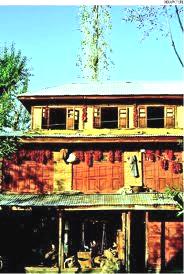

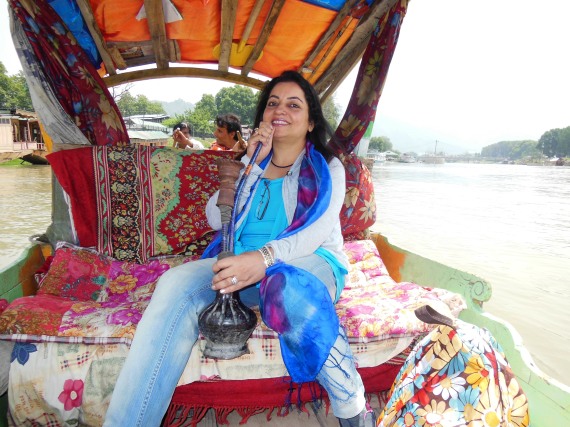
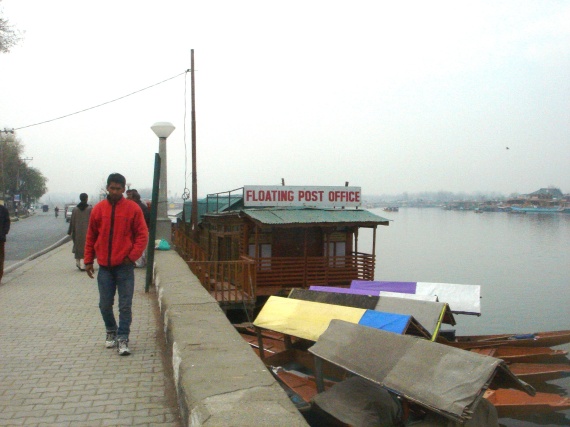
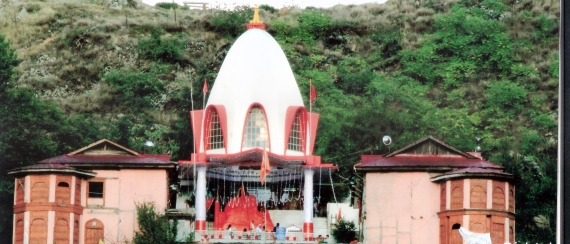

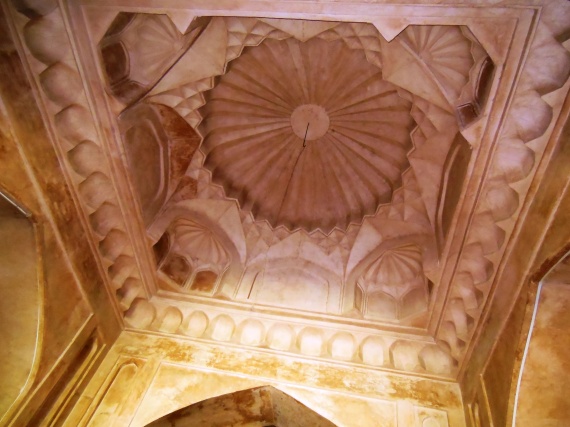
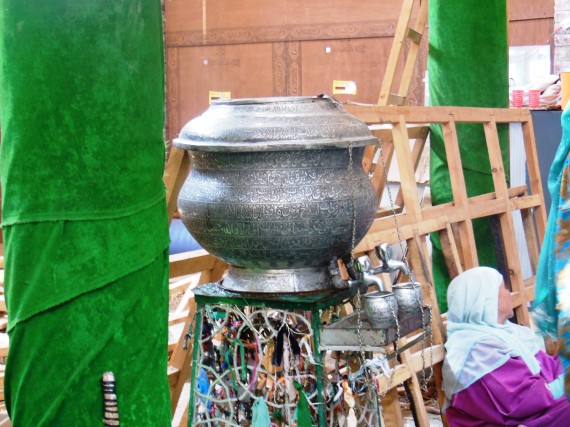




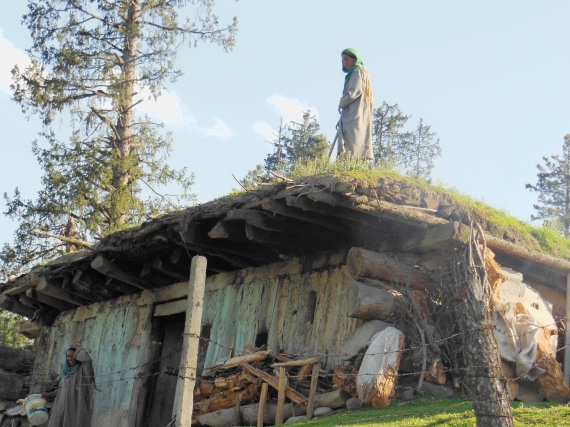


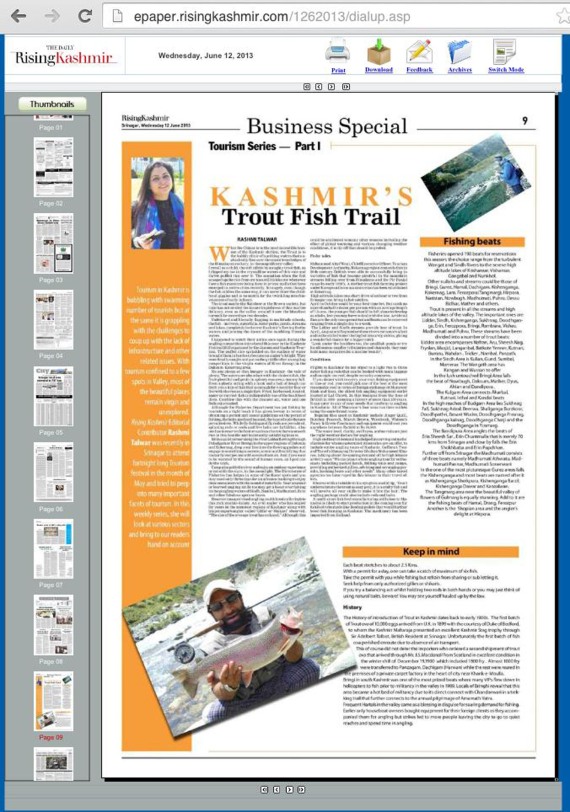











Recent Comments